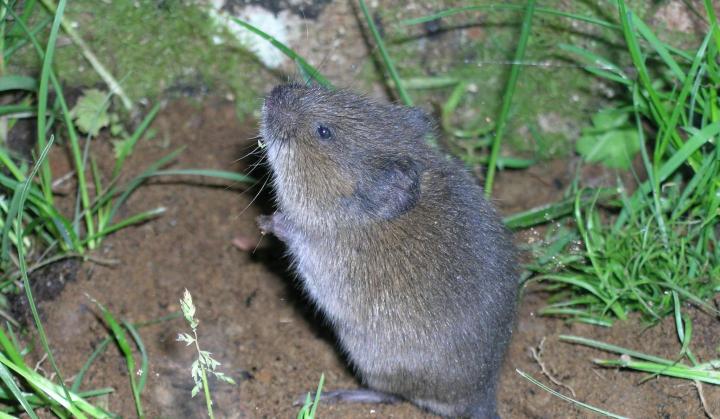Understanding Vole Bug Control: In-depth Insights on Problem Avoidance and Treatment Methods
By identifying the subtle indicators of vole invasion early on, we can take positive procedures to protect against widespread damage. In this discussion, we will discover the nuances of vole actions, dive into the recognition of infestation indicators, and uncover the most effective avoidance and therapy approaches.
Comprehending Vole Habits
Analyzing the foraging patterns of voles supplies valuable understandings right into their habits and habitat preferences. By observing their foraging actions, scientists can obtain a better understanding of where voles like to develop their environments and the level of their environmental effect.
Research suggests that voles display careful feeding routines, preferring origins, seeds, and roots. This dietary preference affects their foraging patterns, leading them to locations abundant in plants and ground cover. In addition, voles are recognized to produce elaborate passage systems for foraging and nesting purposes, suggesting a high level of adaptability to their surroundings.
Comprehending vole behavior is important for executing targeted pest control measures that disrupt their habitat preferences and foraging tasks (vole lawn damage). By researching their habits, specialists can develop much more efficient prevention and therapy methods to manage vole problems

Identifying Indicators of Vole Invasion
Vole problems can be identified by recognizing details signs of their existence in an area. Among one of the most usual indicators of a vole problem is the visibility of surface paths. Voles develop networks of slim pathways on the ground that are typically around 2 inches broad. These paths are commonly located in grassy areas or underneath mulch or ground cover where voles can move easily and look for food.
An additional vital indicator of vole invasion is the presence of tiny burrow openings in the ground. Voles dig superficial burrow systems with numerous entries and departures. These burrows serve as shelter and nesting sites for the voles. Additionally, voles are known to leave behind chewed plant stems, roots, and bulbs near their burrow openings, indicating their feeding activity in the location.
Furthermore, vole droppings can likewise symbolize their existence. Vole droppings are little, brown, and round in shape, looking like grains of rice. Locating these droppings along paths or near burrow openings can verify a vole infestation. By being cautious for these indications, homeowner can promptly attend to vole infestations and avoid further damage.
Implementing Positive Avoidance Actions

Additionally, using natural vole deterrents like castor oil-based repellents or predator pee can work as effective safety nets. It is likewise recommended to on a regular basis examine outside areas for any indications of vole task, such as paths or burrow openings, to attend to potential problems promptly. vole yard damage. By taking on these aggressive prevention methods, homeowner can significantly lower the likelihood of vole damages and keep the health and looks of their landscapes
Effective Therapy Methods
Including targeted trapping techniques and using authorized rodenticides are essential elements of effective therapy approaches for handling vole problems. Normal surveillance and upkeep are additionally vital elements of successful treatment approaches to make certain that vole populaces are kept under control. By combining trapping, rodenticides, habitat adjustment, and consistent tracking, reliable vole parasite control can be attained.
Tracking and Upkeep Tips
Maintaining an organized routine for surveillance and performing regular maintenance tasks is crucial to sustain the efficiency of vole parasite control actions. Normal tracking permits the early detection of vole activity, allowing prompt intervention prior to invasions intensify. To successfully keep an eye on vole populaces, strategically put traps can be made use of in vole runways or near burrow entrances. By consistently examining these catches, home owners Home Page can gauge the degree of vole task and change control methods appropriately.
In addition, preserving a neat and clean landscape is important in vole avoidance. Clearing up away debris, such as heaps of wood or dense plants, gets rid of potential vole habitats. Routinely mowing lawns and cutting greenery helps in reducing vole hiding places and lessens their access to food sources.
Additionally, recurring maintenance of physical barriers, such as fencings or cord mesh, is important to stop vole intrusion. Inspecting and repairing any type of damages to these frameworks makes sure that vole control remains efficient in protecting properties from invasions. By incorporating these tracking and upkeep methods into an extensive vole pest control strategy, individuals can properly manage vole populaces and shield their residential properties from damages.
Verdict
To conclude, mastering vole insect control find needs a solid understanding of vole actions, the capability to recognize indicators of problem, implementing proactive avoidance actions, efficient therapy strategies, and constant tracking and maintenance. By taking a comprehensive approach to vole control, people can effectively manage and avoid infestations, eventually securing their property and surrounding environment from damage triggered by these small rodents.
In this conversation, we will discover the subtleties of vole habits, delve right into the recognition of problem signs, and uncover the most efficient prevention and therapy approaches.Incorporating targeted trapping approaches and making use of accepted rodenticides are necessary components of effective therapy techniques for managing vole invasions. To efficiently monitor vole populaces, tactically positioned traps can be utilized in vole runways or near burrow entryways. Inspecting and repairing any type of problems to these structures makes certain that vole control stays reliable in securing residential properties from problems. By including these tracking and maintenance techniques right into a detailed vole pest control strategy, people can properly take care of vole populations and safeguard their residential or commercial properties from damages.
Comments on “Managing Vole Damage: Effective Control Approaches”